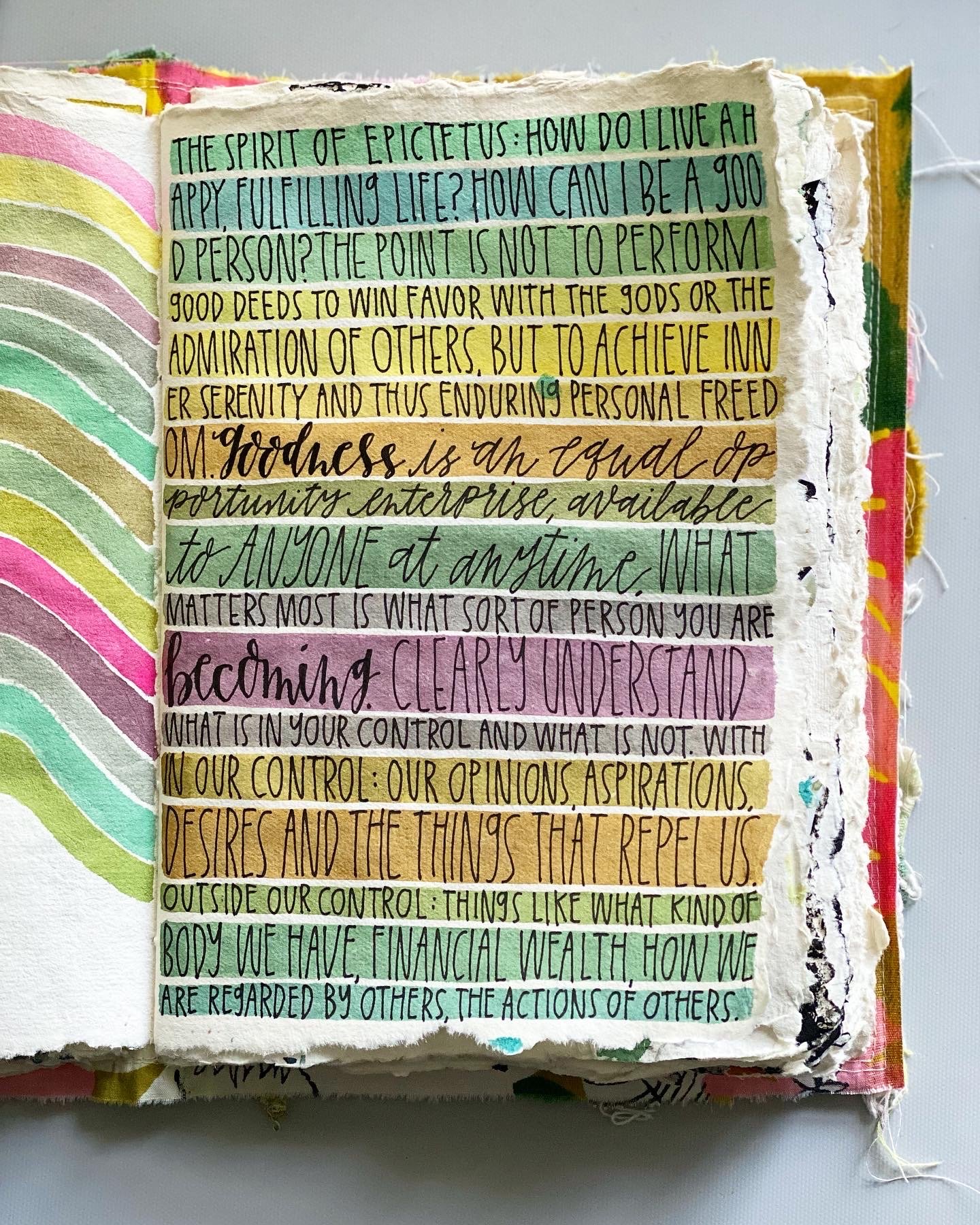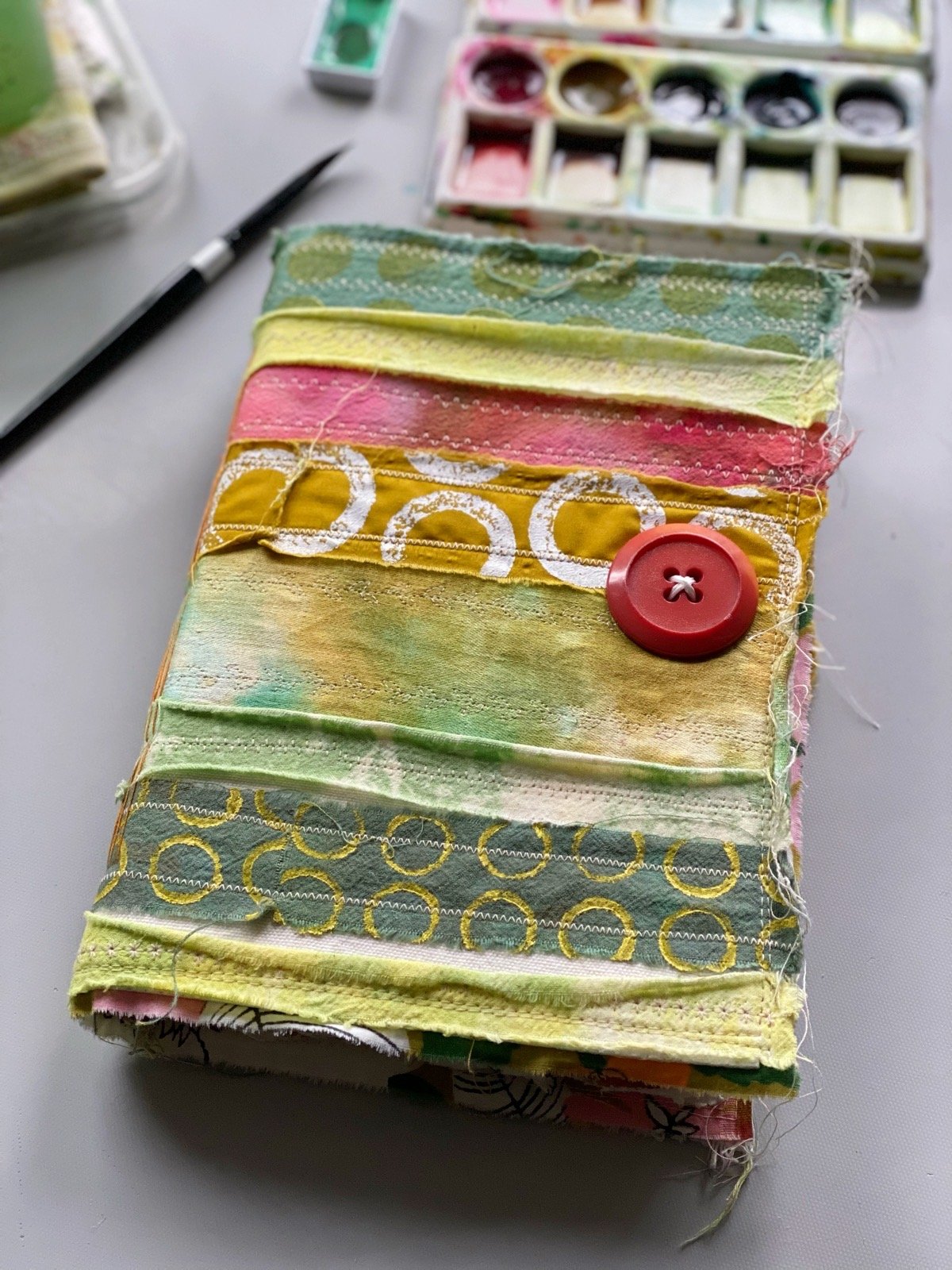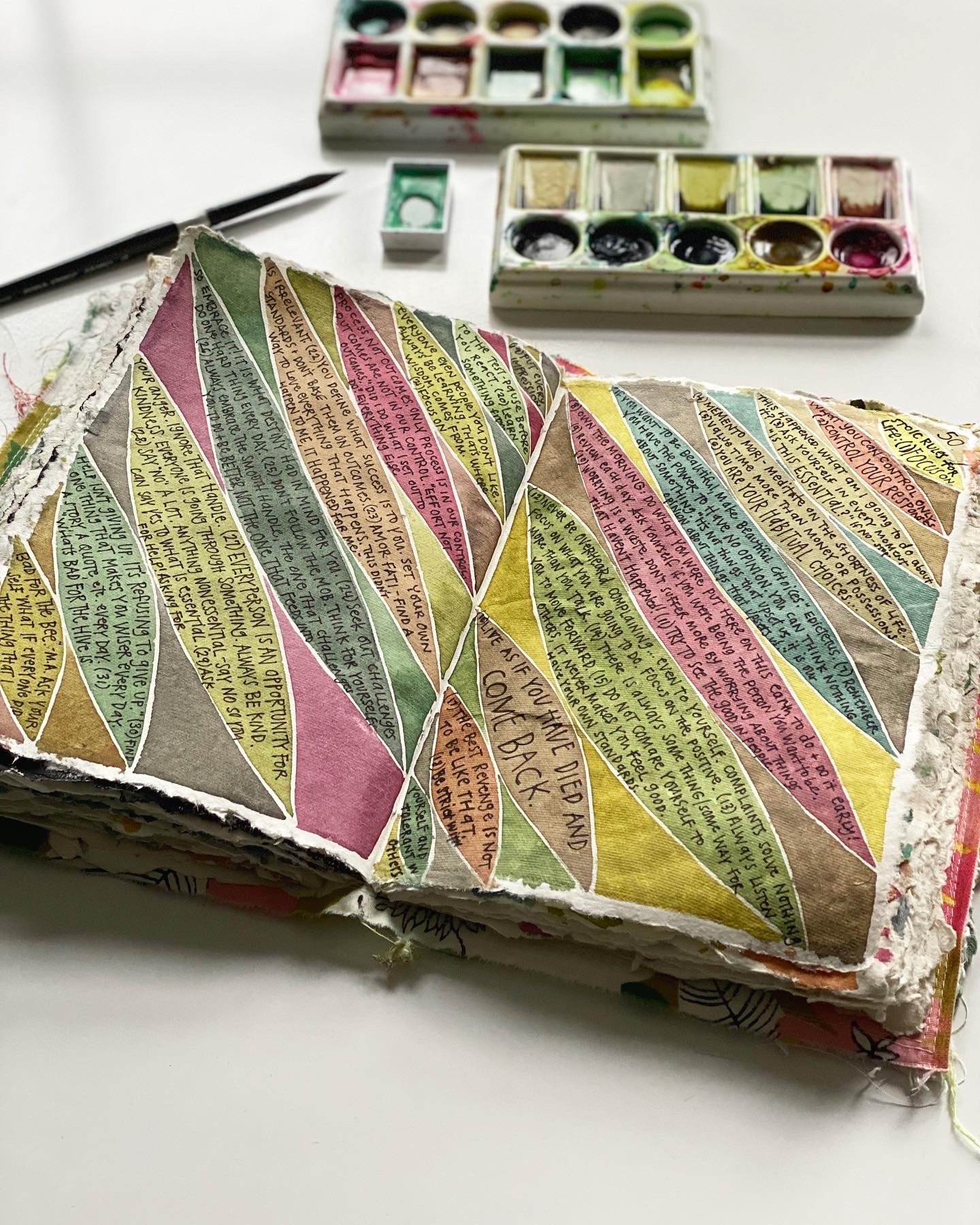Art Journaling and The Stoics
It started when I was going through a challenging situation and a friend recommended that I read Ryan Holiday’s popular book The Obstacle is the Way. The name of this book sounded so familiar and it turned out that I had already purchased it. It was waiting for me to listen to it in my Audible library.
I had absolutely no idea that this book was about Stoicism, what Stoic philosophy was, or how popular Stoicism had become.
Once I began listening, I was completely and utterly gripped by how reasonable, rational and logical the whole thing was. I was amazed at how the trials and tribulations of Roman emperors and Greek philosophers from 2,000 years ago seems not so different from the stuff we are all confronted with today. I was smitten!
I figured that the best thing I could do at this point was to take a super deep dive into Stoicism. I listened to Ryan Holiday’s advice and purchased books from the main Stoic “gurus” that folks read today: Marcus Aurelius, Seneca and Epictetus. (These books are so much more readable that I had EVER imagined!)
Now if you are anything like me, you’re wondering at this point where the art making comes in. This blog post will review one way that I use art journaling to be a happier person and thus, basically, to improve my life overall.
I use my art journals the way that I used to use my notebooks when I was in college and law school: as a way of internalizing information in a way that works for me. I need to write ideas out on paper and make them beautiful in order to get them to stick in my brain.
My college notebooks are full of carefully written, diagrammed, and drawn out facts and ideas. It’s just the way that I learn best, and I’m not alone. Just do a search on Instagram for #studygram and you’ll find 16 million posts on creative note taking for school.
But I’m no longer in school or preparing for tests, so my art journals can be more fun and less formal than what is being created by students today.
I also never need to review my notes, so they don’t even need to be legible! I don’t totally care if what I create makes sense to anyone else, or even myself for that matter. It’s the process of meditating on the words as I carefully hand letter them that is the meaningful thing to me.
Just so you know what I’m talking about here, here are some examples of my art journal pages from the journal that I am currently working in:
Notes from Epictetus: The Art of Living (Interpretation by Sharon Lebell)
A healthy relationship with the fact that life is short, aka Memento Mori, and acting accordingly, is an emphasis of Stoic philosophy.
Art journalled notes from The Art of Living by Epictetus, Interpretation by Sharon Lebell.
All of these art journaling exercises were done in a handmade journal that I created using the method that I teach in my class called The Willa Journals Course. Instead of sewing in pages that are all different, I chose to use one paper for the entire book. The paper is a handmade paper that I purchased on Amazon that is labelled “watercolor paper. You can check that paper out here. I don’t recommend it for serious watercoloring, but it is perfect for the type of art journaling that I do and it’s squishy, soft, yummy texture keeps me coming back to this particular journal time and again!
I created these fabrics in Fodder School 1, and then used them to make myself a Willa Journal filled with one paper type.
My method for creating these art journal meditations is this:
Optional: prepare pages with watercolor ground. It is like gesso, but for watercolor paint. This is not necessary if you are painting on actual watercolor paper. This is even still optional with non-watercolor papers, like the one I use in this journal. I’m still experimenting with whether I prefer prepped pages or unprepped pages when it comes to watercolor painting on this handmade paper that I’m using.
Spend time simply painting watercolor shapes onto the art journal page(s) using a good paintbrush and the watercolor paints that I love (Renesans by Polska) using The Mother Method of color mixing (see my YouTube video for a detailed explanation).
Let page(s) dry fully.
Find text that is meaningful to me on that day, whether from a book, a podcast episode or a YouTube video.
Using a good black pen, slowly hand letter quotes of significance to me on top of and in between the watercolored images. Hand lettering is something I have studied on and off for a loooong time (45 years if you consider grade school-LOL) and is not the subject of this blog post.
Step 1: Just paint. It’s so relaxing and meditative whether or not I end up adding text later on!
Step 4: What a page in my journal looks like after I’ve added “thought fodder” that I find meaningful on a particular day. Maybe these words look like nonsense later on. I don’t mind. I do this for me, not to make art with lasting significance. It is the process of meditating on those words and ideas that is so relaxing for me. I find that it calms my nervous system.
Similar to Julia Cameron’s Morning Pages from The Artist’s Way, the Stoic philosophers prescribed a daily writing practice of reflection on the self as part of a system that brings the writer more happiness and peace.
Check out my favorite professional watercolor paints by Renesans Polska here. For 10% off of your entire order with alittlecreative.me, use the coupon code WILLA10.
The watercolor shapes + hand lettering overlay is also perfect if you are a Julia Cameron-The Artist’s Way-Morning Pages kinda person. Just do stream of consciousness writing and feel your troubles release from your brain.











